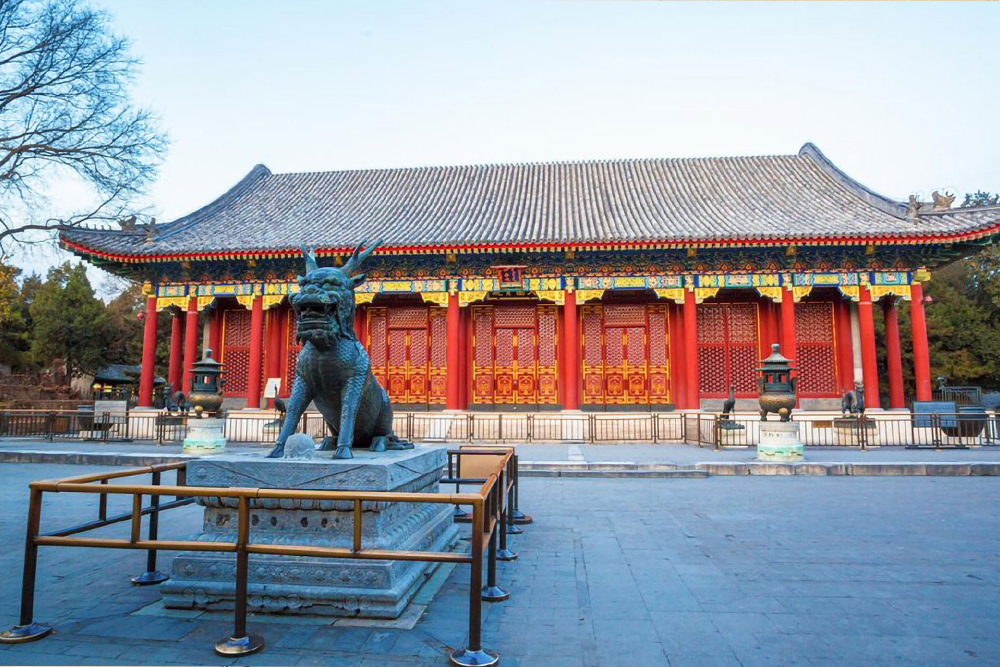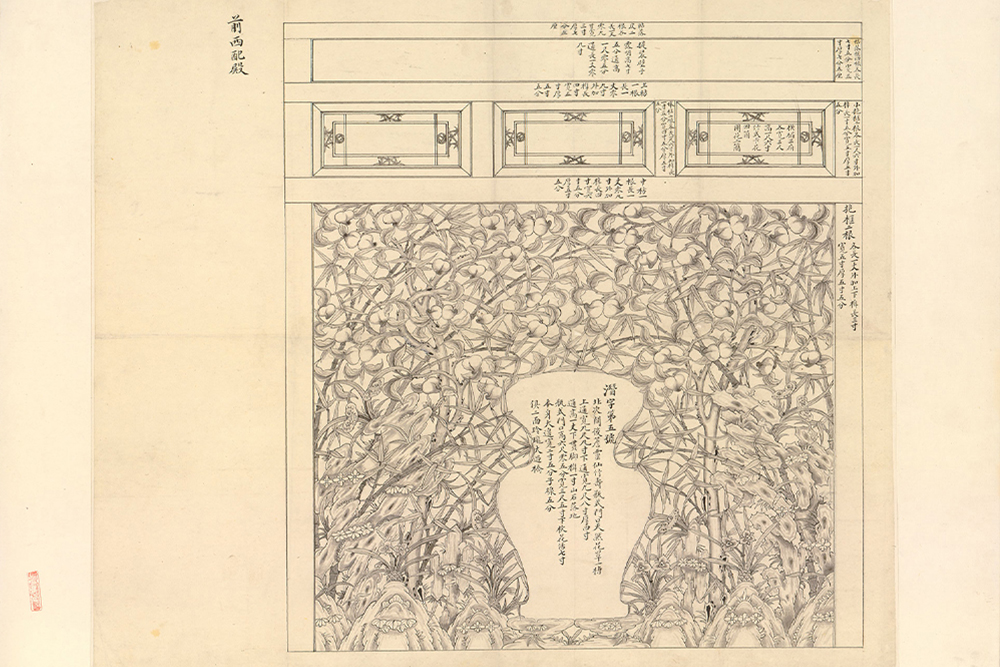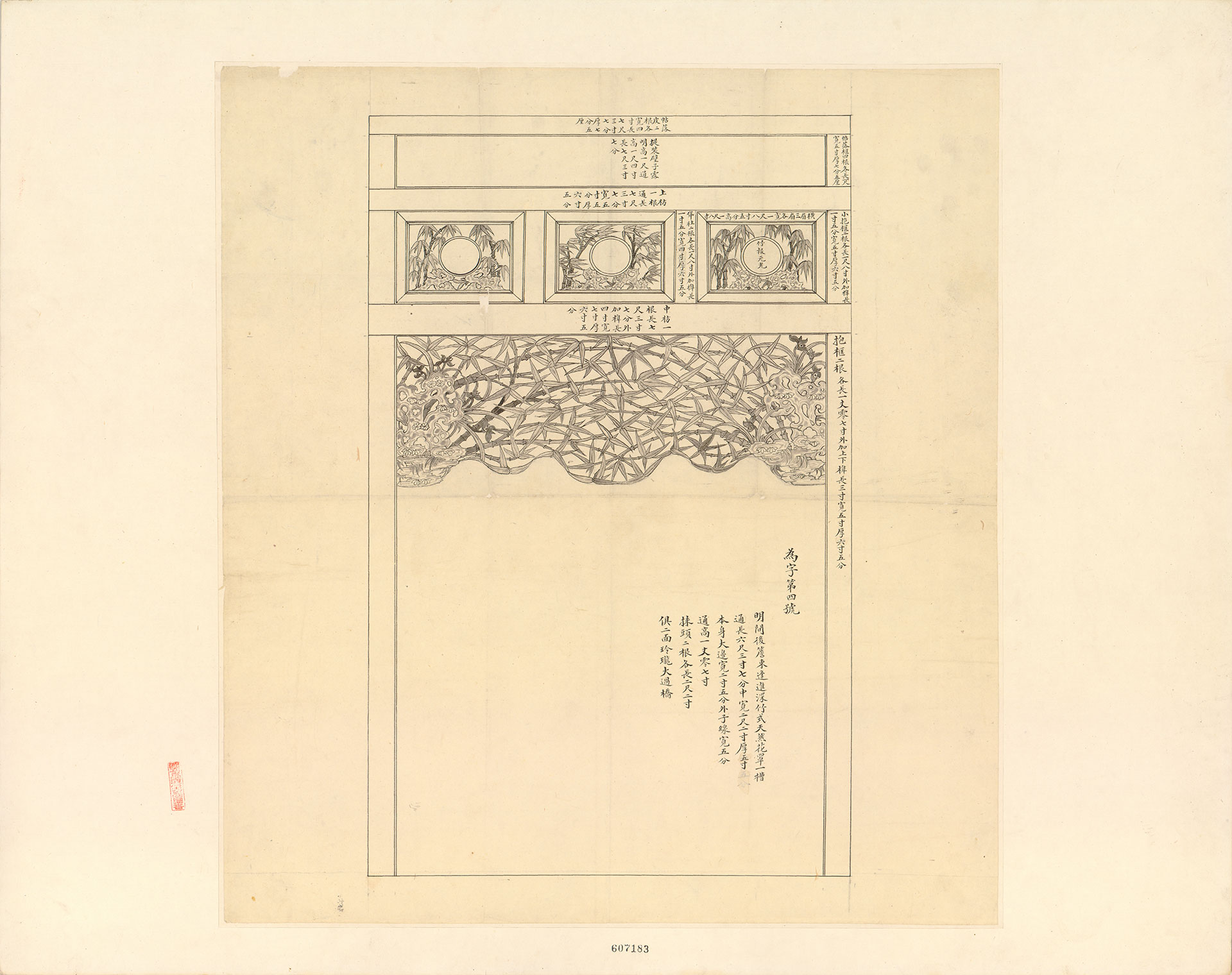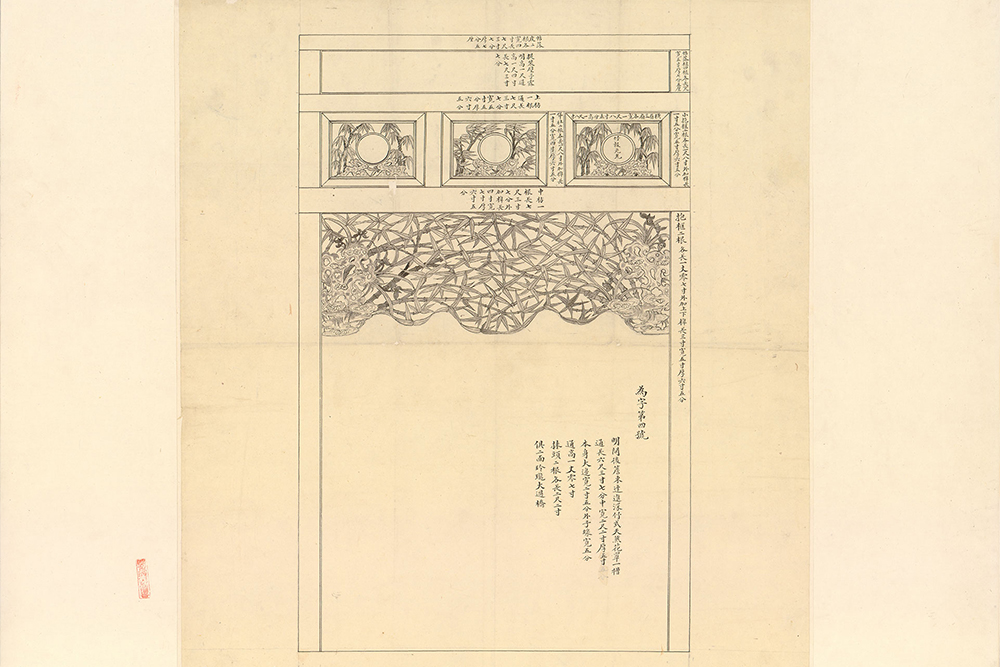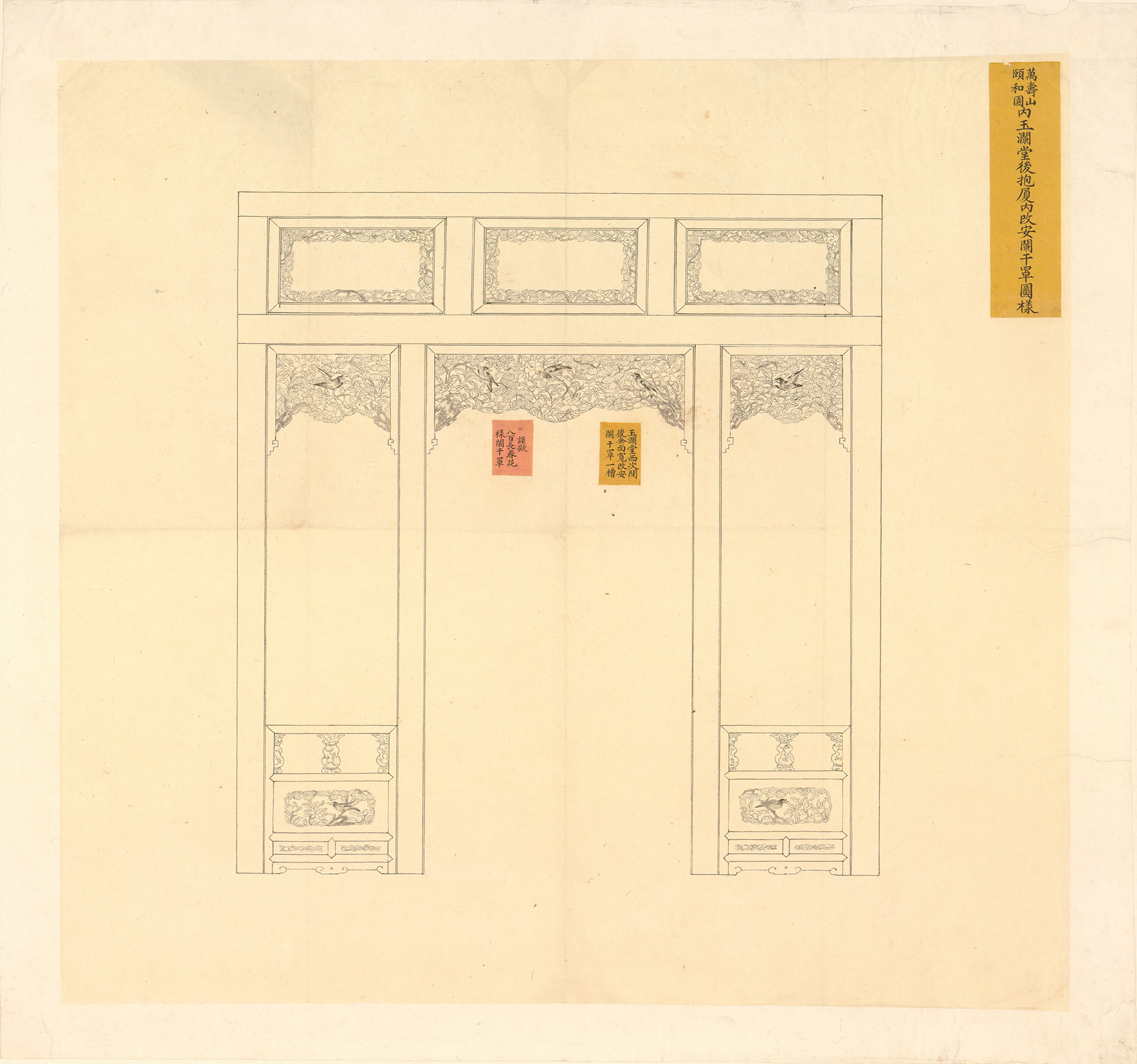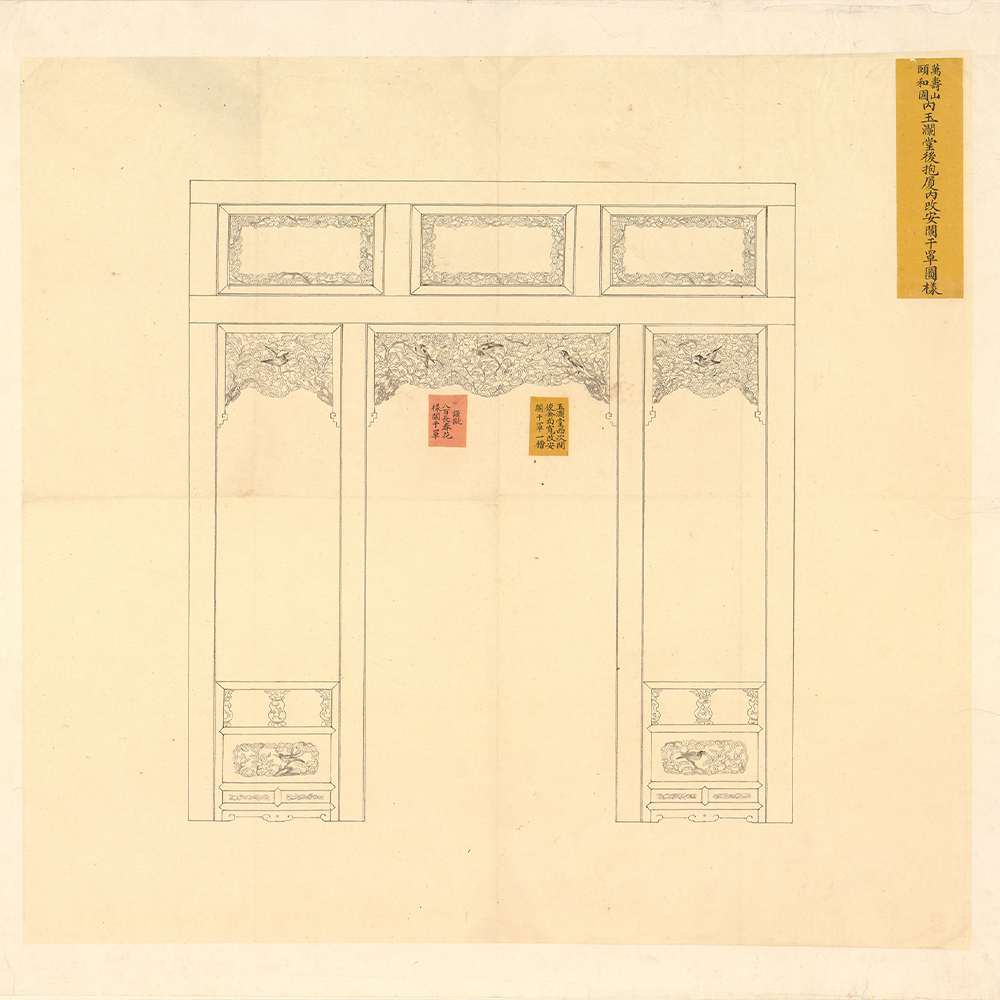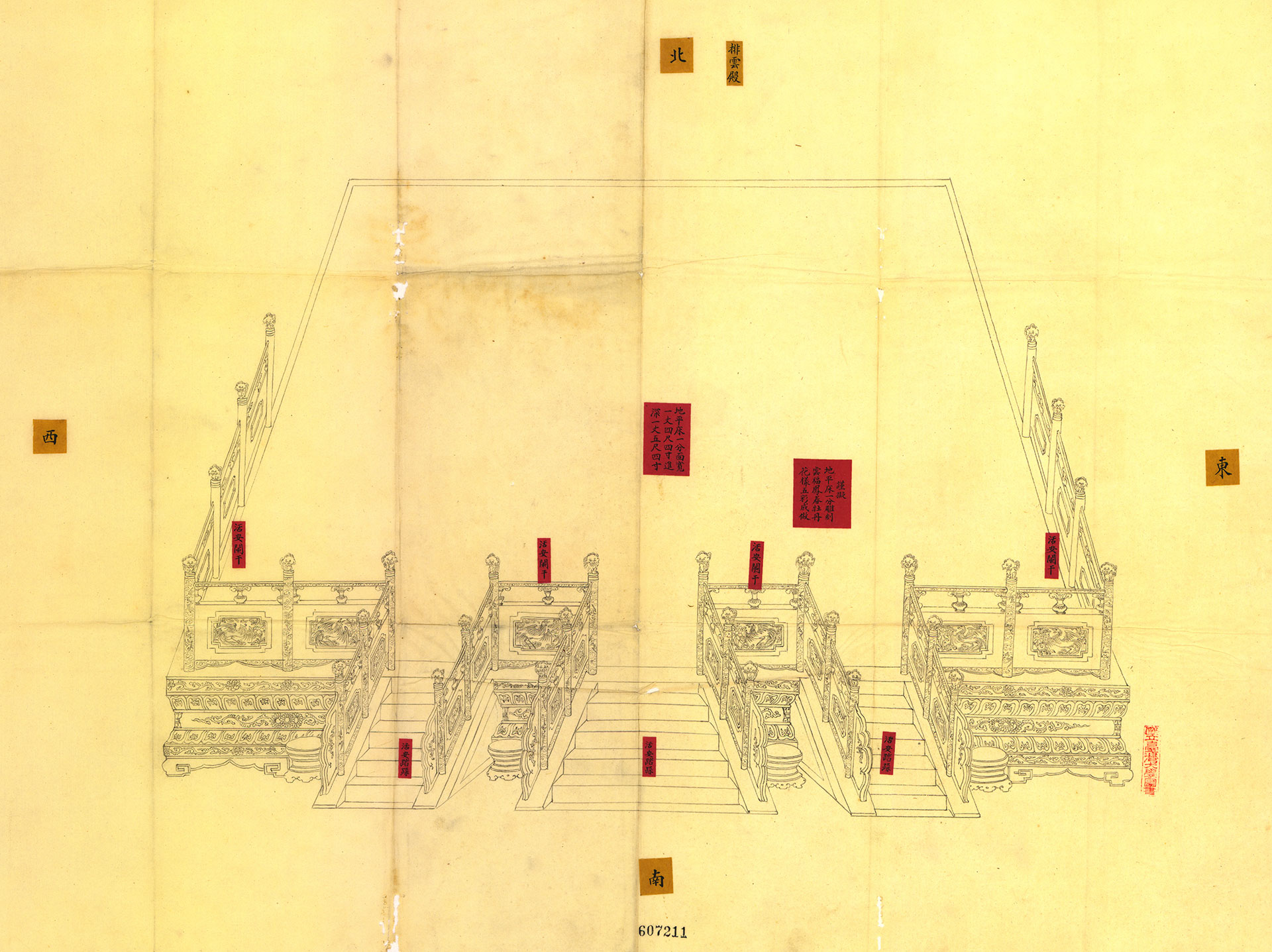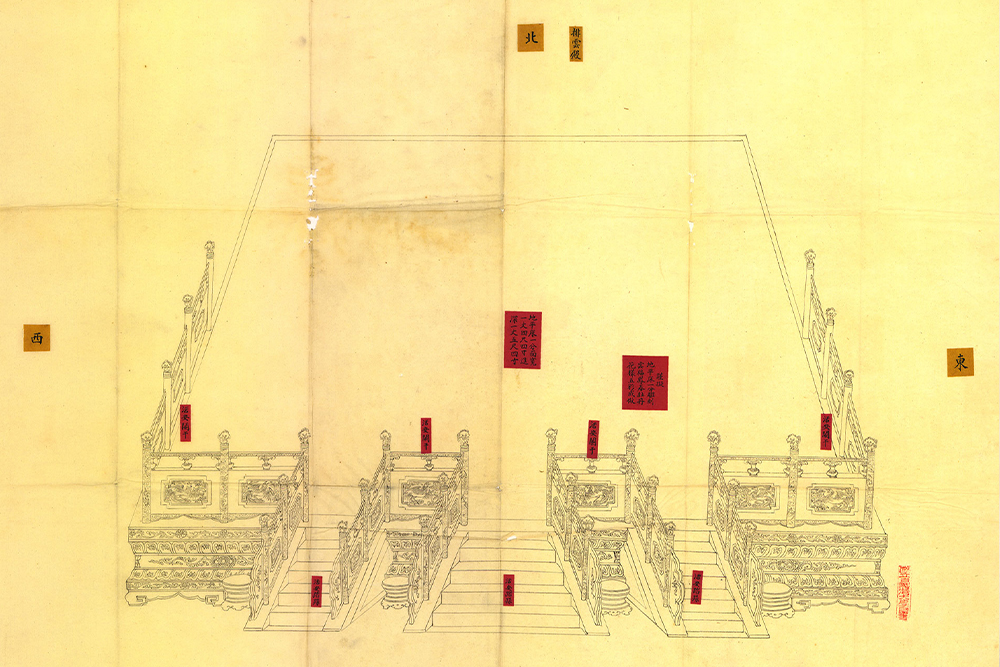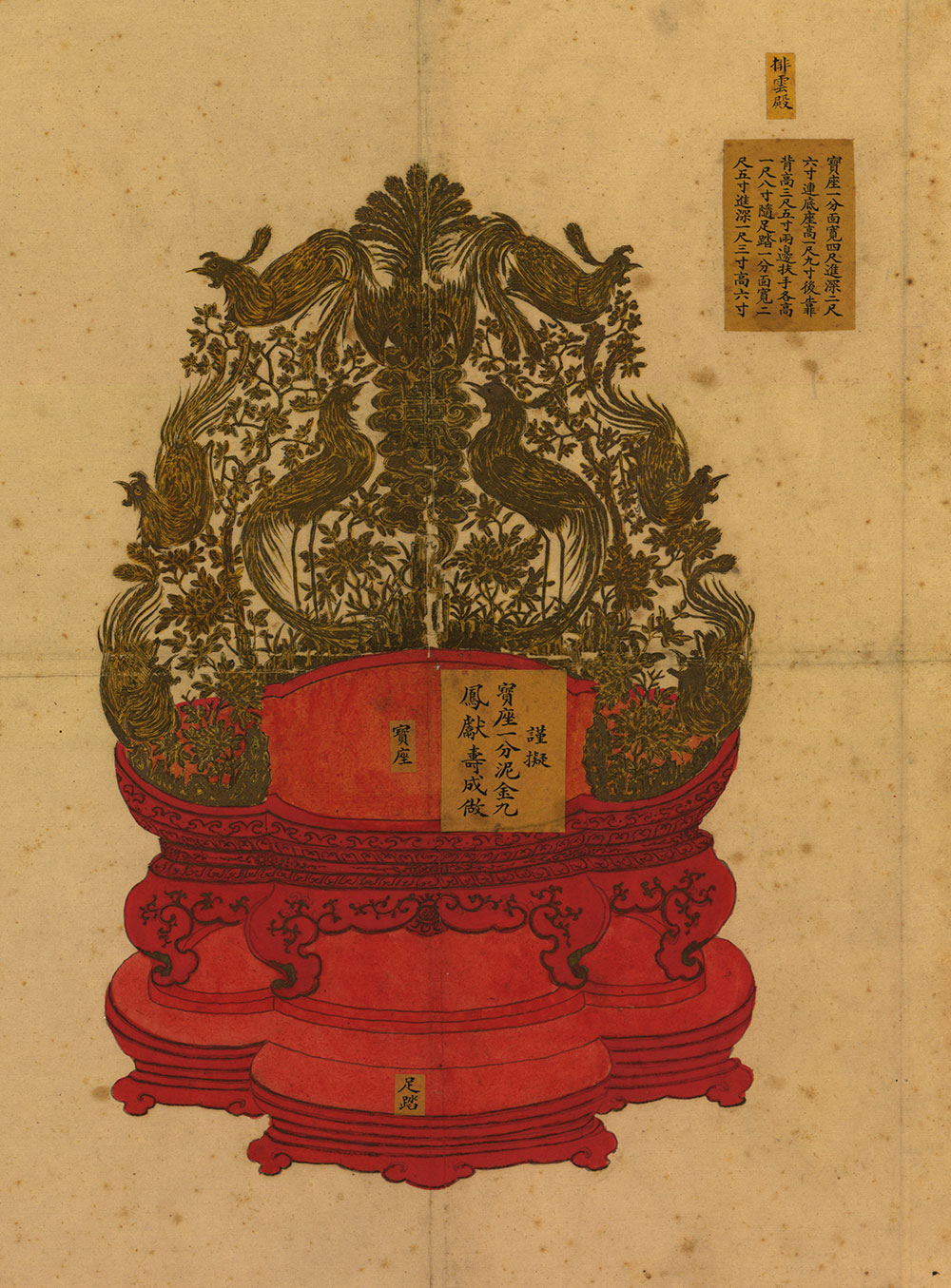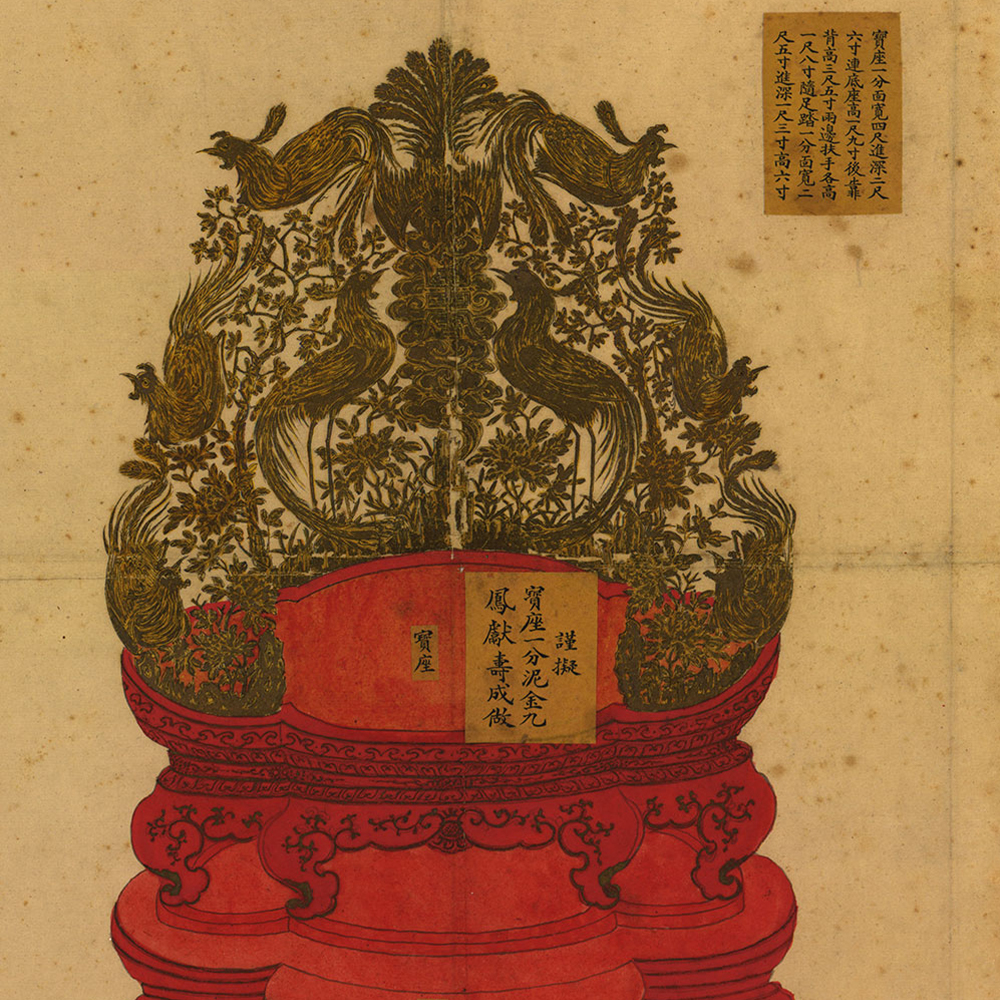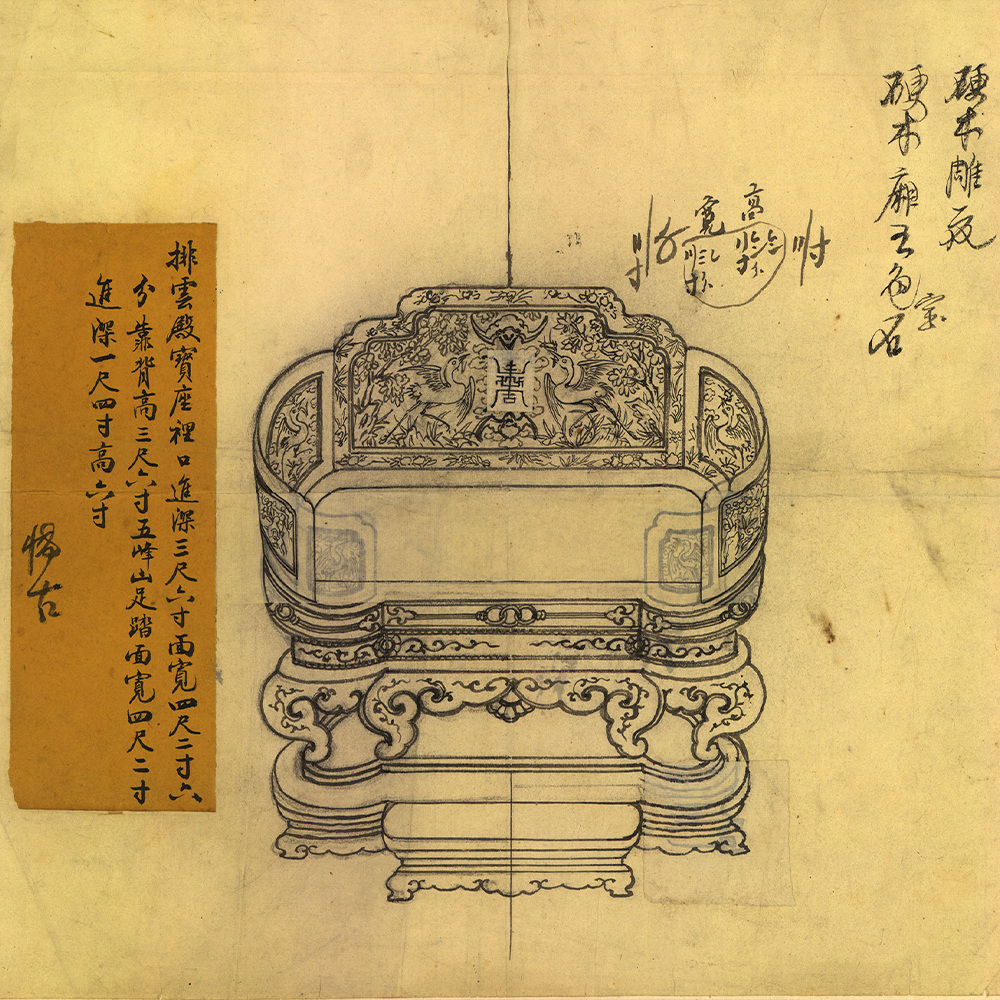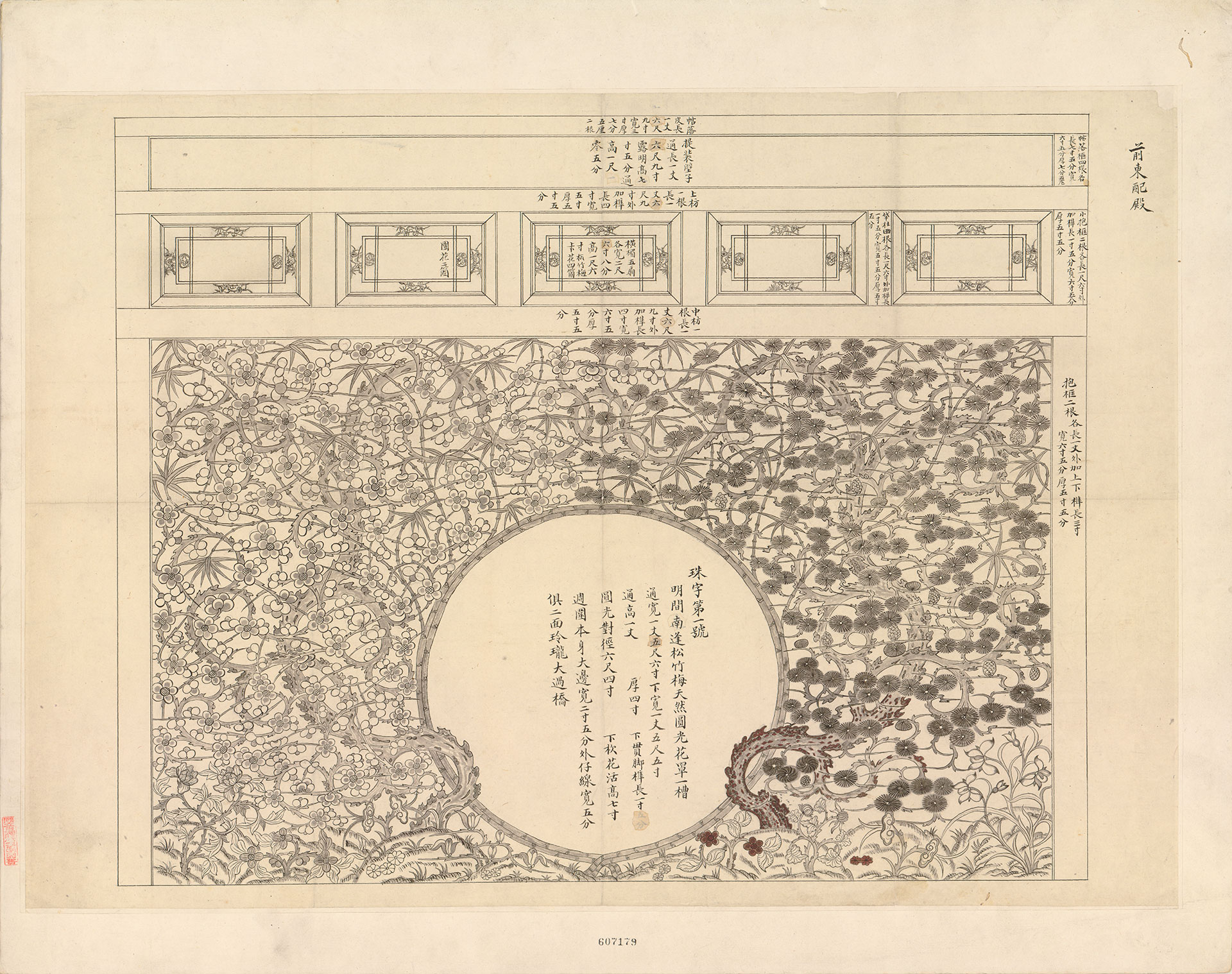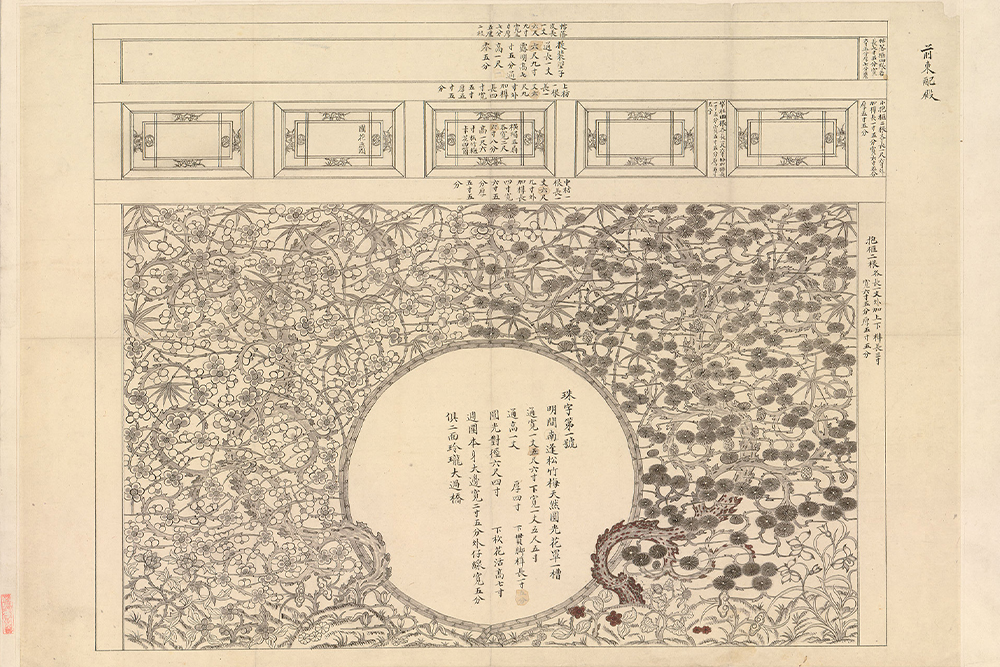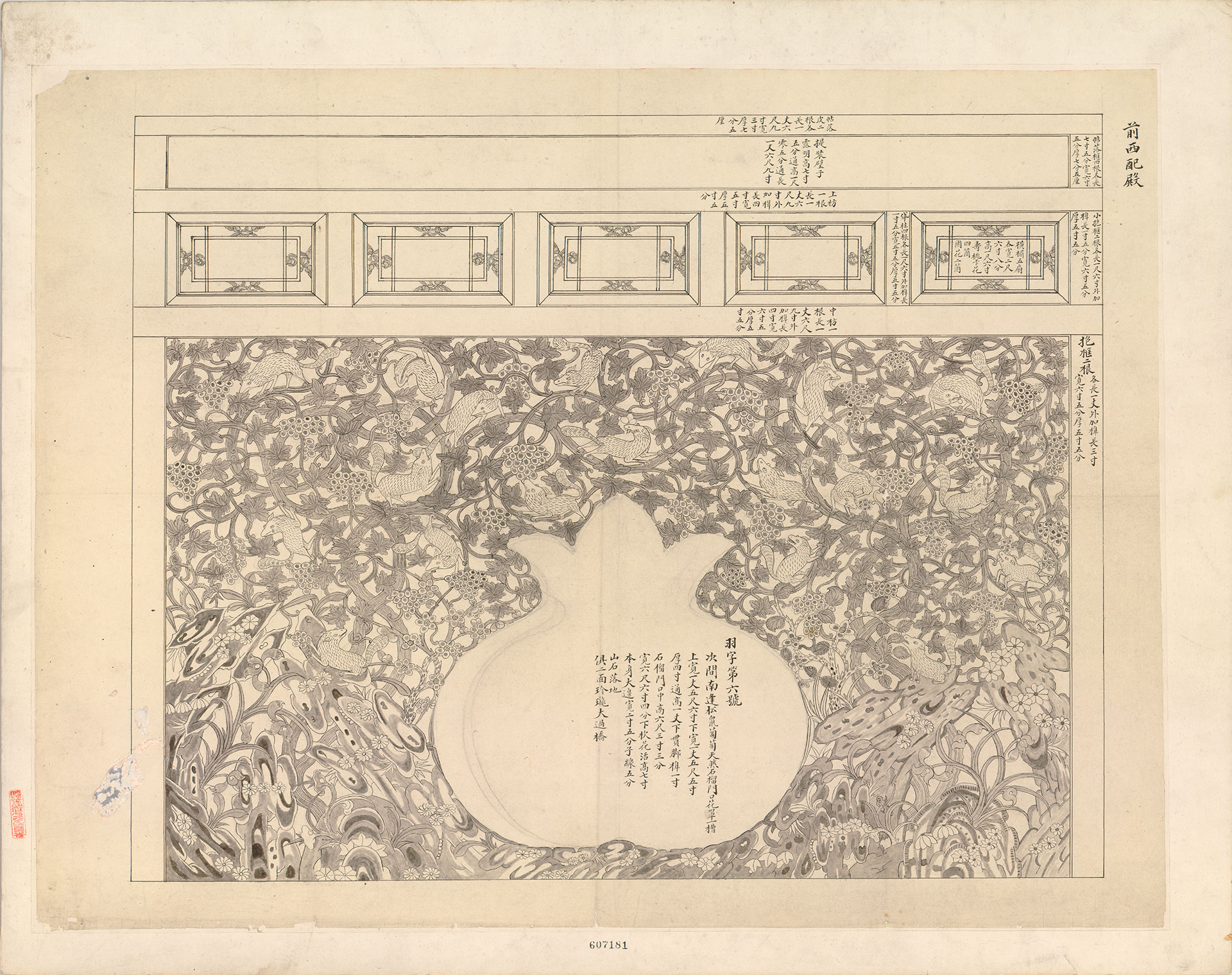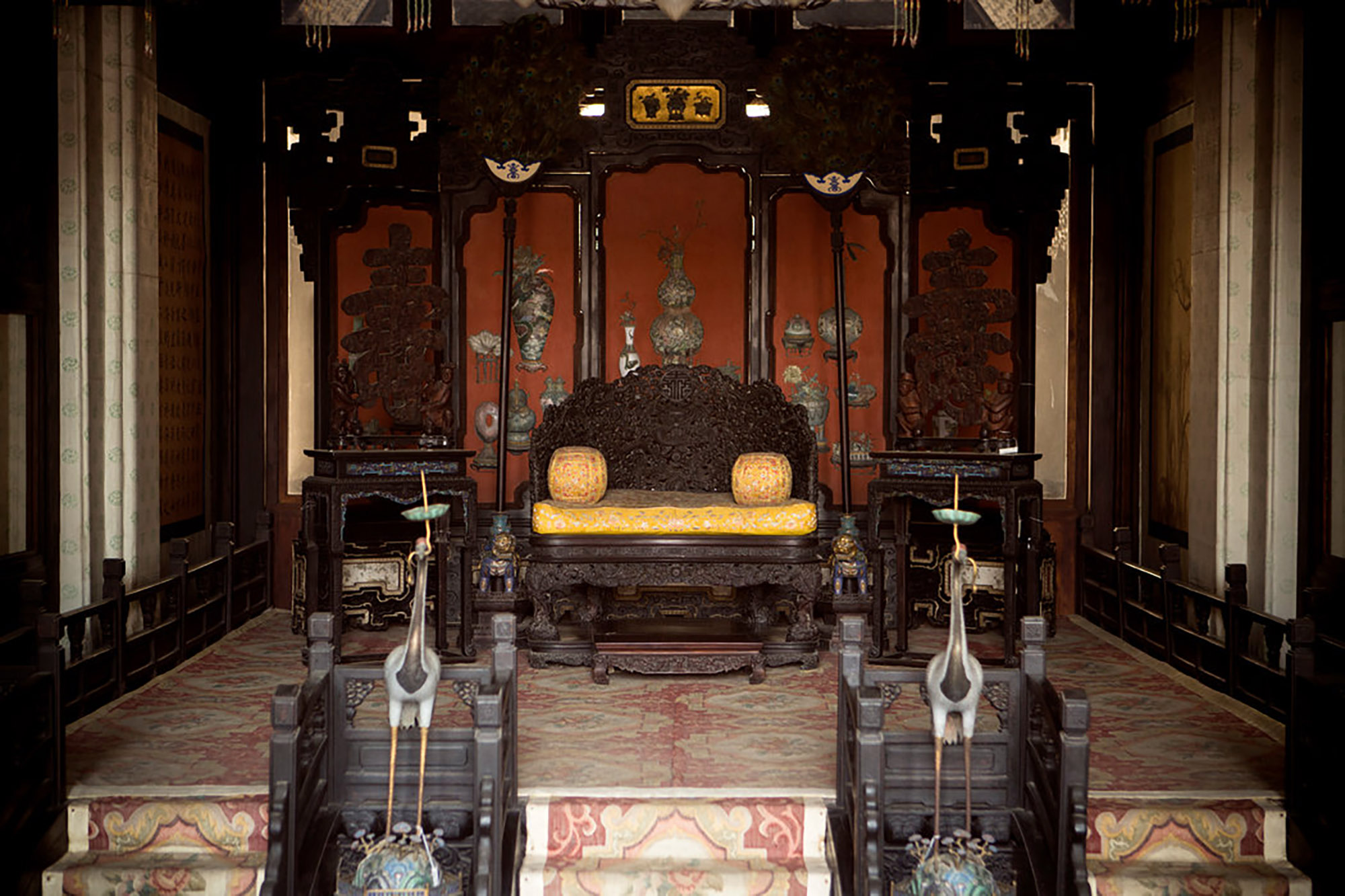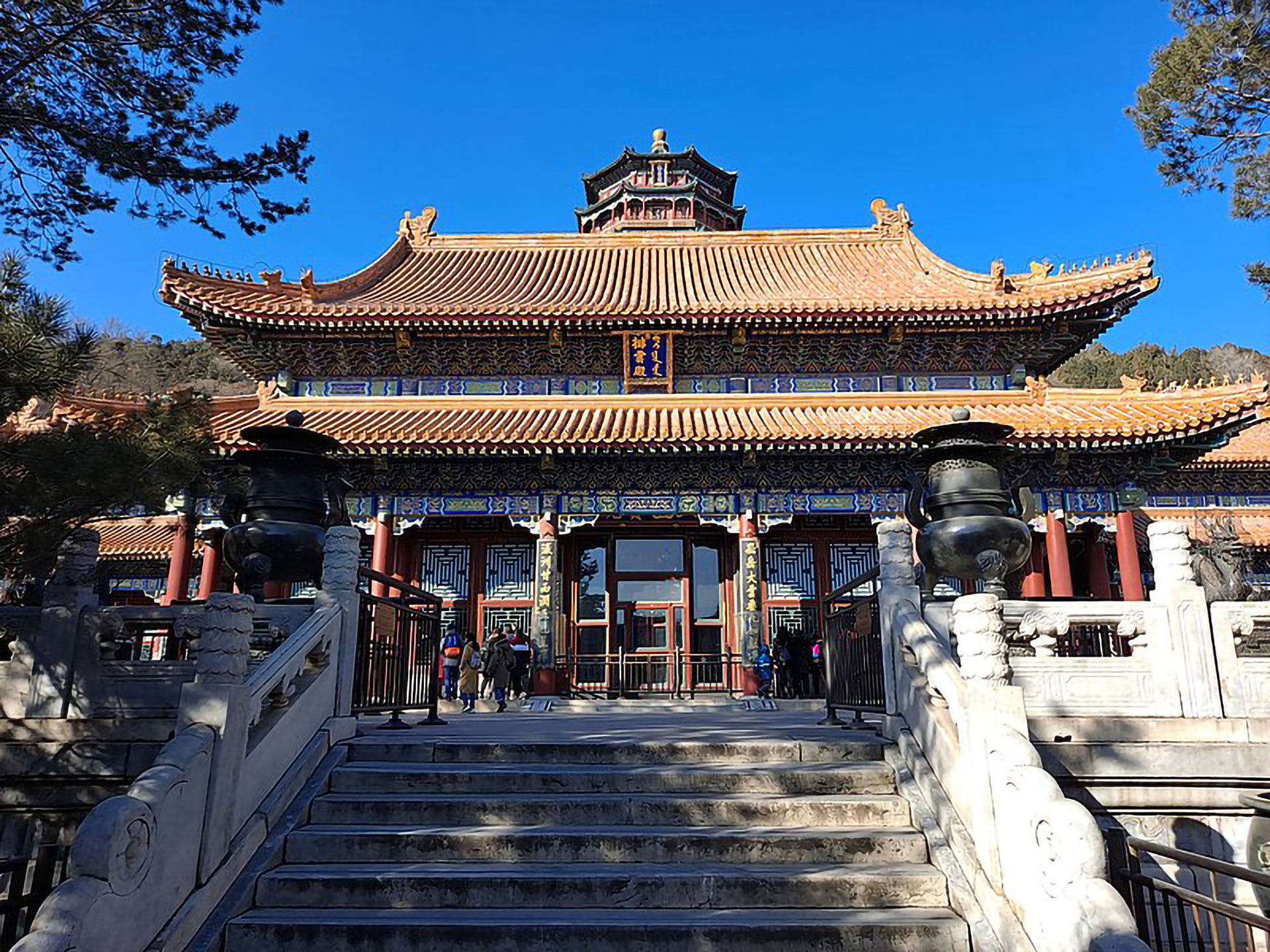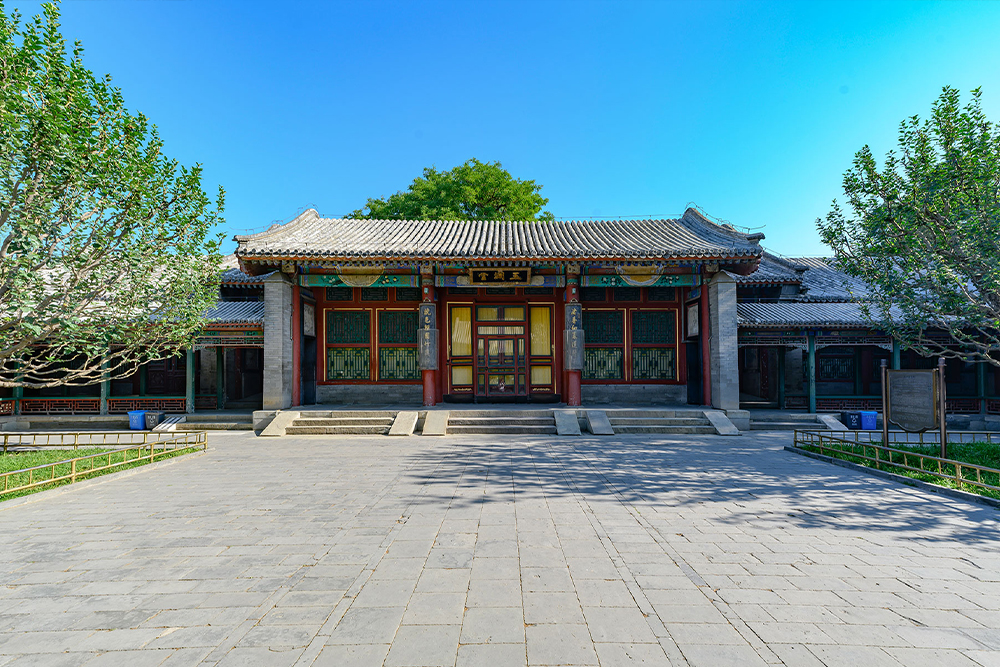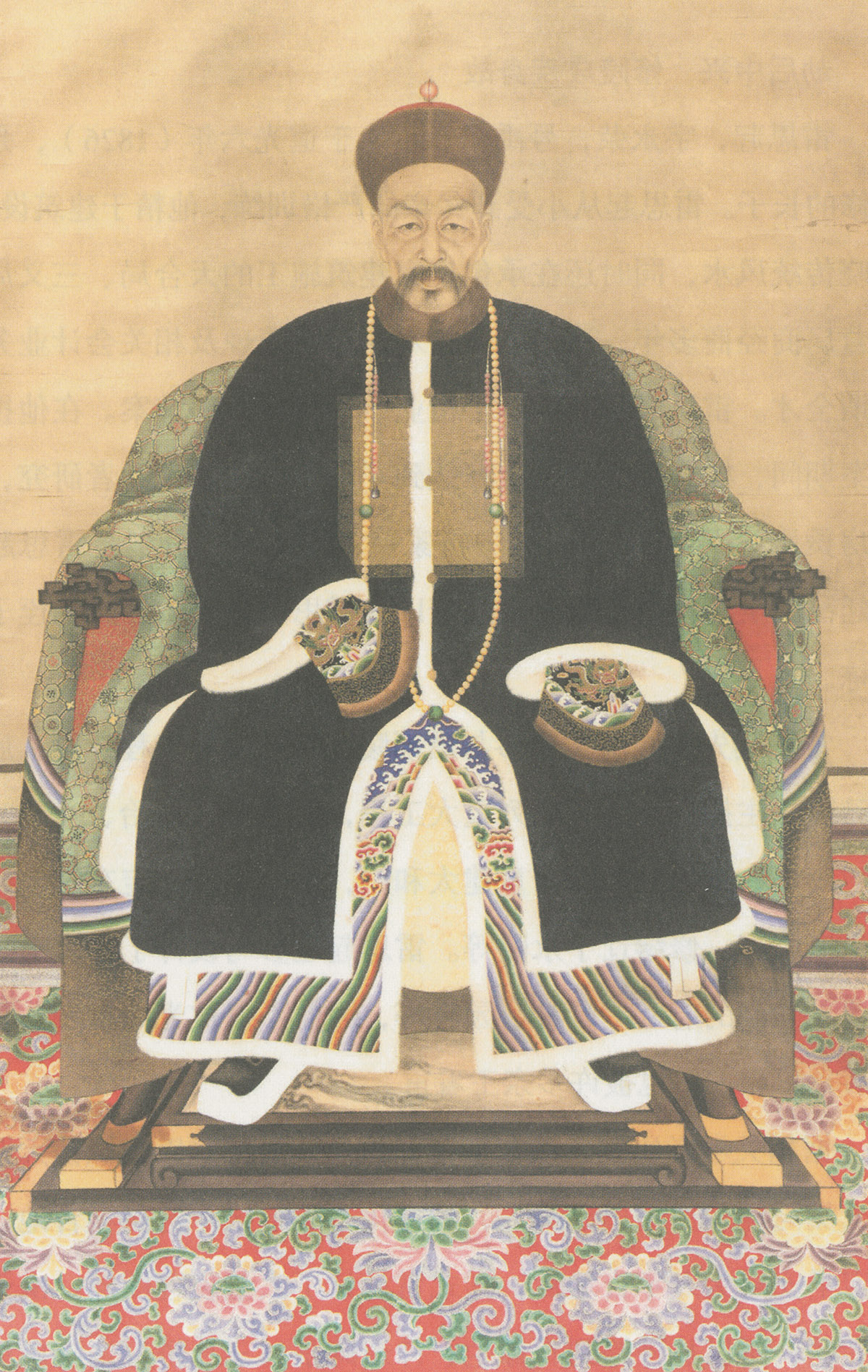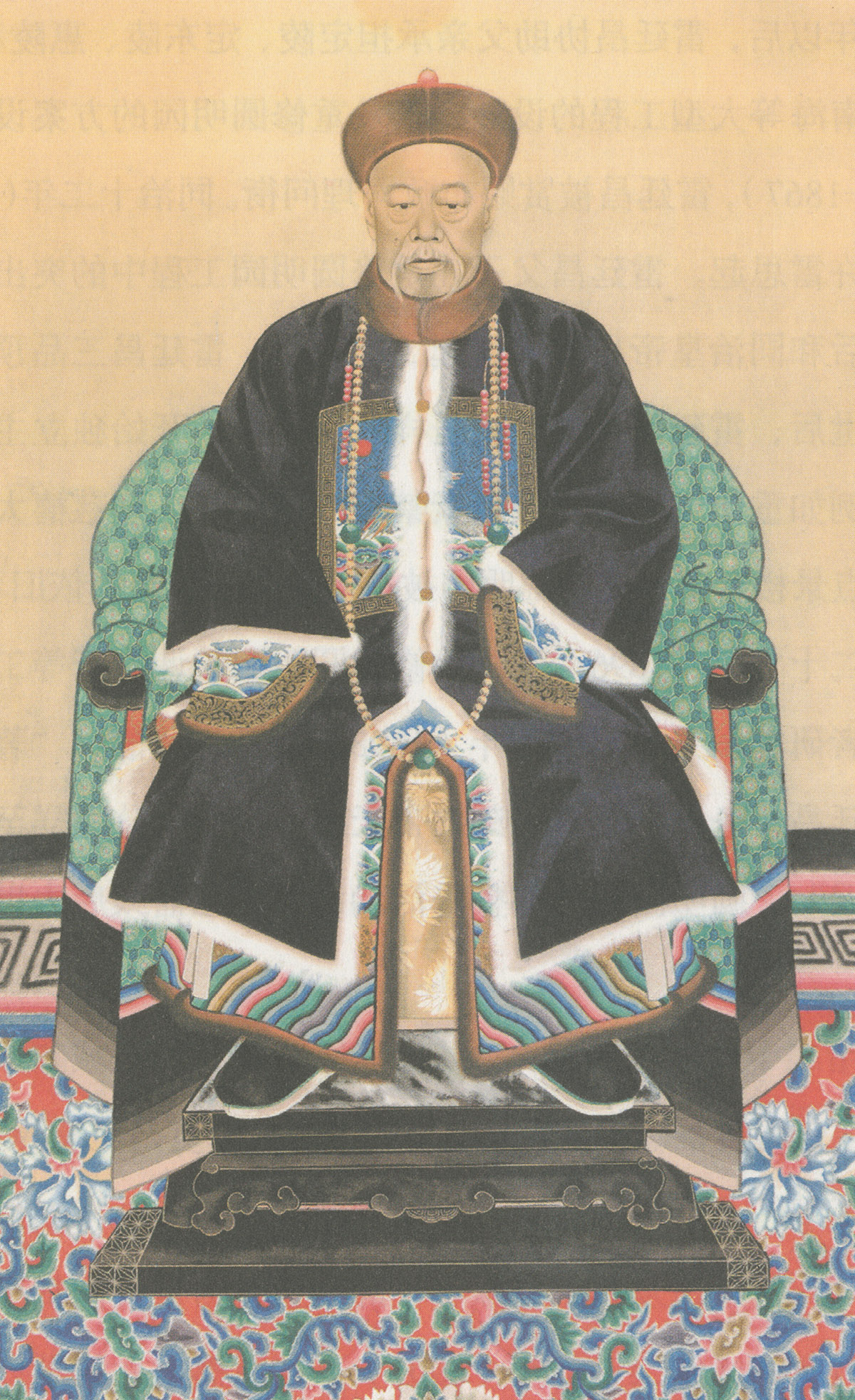Imperial Architects – The Lei Style Architecture
In the Qing Dynasty, the construction of imperial buildings was typically overseen by a specialized team of palace-appointed architects. However, historical records often left the specific participants in this team largely unknown, except for high-ranking officials and trusted associates. Many others involved in these activities remained relatively obscure, and the details of their contributions and work were often lost to history.
In the early 1930s, the academic institution devoted to the study of ancient Chinese architecture, The Society for the Research in Chinese Architecture, led by its president Zhu Qiqian (1872-1964), learned that descendants of the Lei family were facing financial difficulties and were trying to sell the family's ancestral "Lei Style Architecture" drawings. Zhu Qiqian mobilized his connections to acquire these precious documents, thus ensuring their preservation.
Following this, scholars from the society, including Liu Dunzhen (1897-1968), Liang Sicheng (1901-1972), Shan Shiyuan (1907-1998), and others, embarked on research into the "Lei Style Architecture " and the history of Qing Dynasty palace architecture. This initiative played a pivotal role in enhancing public understanding of the "Lei Style Architecture" and shed light on the significant individuals of the Lei family who were involved in imperial architecture.
The Lei family originally hailed from Jiangxi, and according to their genealogical records, a family member named Lei Jinyu (1659-1729) began participating in imperial architectural construction during the Kangxi reign(1662-1722) of the Qing Dynasty and gradually gained significant recognition. Over several generations, under careful cultivation within the family, they continued to hold leadership roles in construction styling office within the imperial palace.
This section will combine materials from NPM's collection with selected "Lei Family Style" architectural drawings from the late Qing Dynasty, held in the Taiwan University Library. We will present two exemplary cases of imperial projects, allowing us to glimpse the essence of the "Lei Family Style."
Summer Palace Renovations during the Emperor Guangxu Era
The National Taiwan University Library currently has a collection of 53 Lei style architectural drawings. Judging from the content of these drawings, they are likely those made by Lei Siqi (courtesy name Yongrong, 1826-1876, the sixth generation of the Lei family) and his son Lei Tingchang (1845-1907) after their participation in the imperial family construction projects at the time. To support the theme of the current exhibition, the National Palace Museum collaborated with the school and selected 18 drawings. The drawings are divided into two groups to be exhibited in two separate periods. The artifacts will be mostly interior decoration drawings of the Summer Palace in the late-Qing dynasty, including those of the Hall of Dispelling Clouds, Hall of Jade Billows, and Hall of Benevolence and Longevity.
- Summer Palace: Hall of Benevolence and Longevity
The Summer Palace, formerly known as the Clear Ripple Palace, was built by Emperor Qianlong in 1740 to celebrate the 60th birthday of his mother Empress Dowager Chongqing (1692-1777, Niohuru clan). Unfortunately, it was burned down during the Second Opium War in 1860. As the young Emperor Guangxu (1871-1908, reigned 1875-1908) grew up, in 1886, Empress Dowager Cixi (1835-1908), who had been attending to state affairs on behalf of Emperor Guangxu for many years, began to contemplate returning her political power to her son and rebuild the Clear Ripple Palace as her residence after retirement. The palace was reconstructed in 1888 and renamed the “Summer Palace.” However, because of the financial difficulties of the imperial family in the late-Qing dynasty, construction of the palace mainly concentrated on the buildings in front of the Longevity Hill, including the Hall of Dispelling Clouds where the empress dowager lived, the Hall of Jade Billows where the Emperor lived, and the Hall of Benevolence and Longevity where the empress dowager and emperor attended state affairs when they were in the palace.
In the late-Qing Dynasty, Lei Siqi and his eldest son Lei Tingchang of the Lei family were responsible for reconstructing imperial gardens, leaving behind many engineering drawings, some of which are now in the collection of the National Taiwan University Library. The current exhibition is divided into two periods, both of which will present the Lei style architectural drawings of three locations, giving visitors a glimpse of the Lei style architectural art.
- Front gate of the Hall of Dispelling Clouds
The Hall of Dispelling Clouds was one of the representative buildings in the Summer Palace and Longevity Hill. Designed and built at the order of Emperor Qianlong for his mother (Empress Xiaoshengxian), the hall was severely damaged following the British and French allied force invasion in China. To celebrate the 60th birthday of Empress Dowager Cixi (1835-1908) in 1892, the imperial court decided to reconstruct the hall at the same location. The newly completed hall was renamed the “Hall of Dispelling Clouds,” becoming where Empress Dowager Cixi lived and where her birthday celebrations took place. The Lei style architectural drawings include 3D drawings of the flat bed, hand fans decorated with peacock designs, and the empress dowager’s seat in the Hall of Dispelling Clouds. The drawings have yellow and red tags to explain the design content in detail.
- Front gate of the Hall of Jade Billows
The Hall of Jade Billows, which faced south, was Emperor Guangxu temporary residence when he stayed at the Summer Palace. The east and west auxiliary halls on the left and sides of the Hall of Jade Billows were called the “Xiafenguan” and “Ouxiangxie,” respectively. In 1892, the Hall of Jade Billows underwent reconstruction and renovations. The artifacts exhibited here include the designs drew by the Lei family for the interior partitions of the hall and its east and west auxiliary halls. These designs include those of the rear annex, east room, and Ming Room rear eave natural flower canopy of the Hall of Jade Billows; and interior protective railing, natural floor cover, and round cover of the east auxiliary hall (Xiafenguan) and west auxiliary hall (Ouxiangxie). The drawings are meticulous. From the traces of revisions made on some of these drawings, one can conclude that the drawings were in their initial stages.
- Front gate of the Hall of Benevolence and Longevity
The Hall of Benevolence and Longevity was connected to the west the Hall of Jade Billows. It was called the “Hall of Good Governance” since the time of Emperor Qianlong, and was renamed the “Hall of Benevolence and Longevity” when reconstruction of the Summer Palace began in 1886. It was the place where Emperor Guangxu and Empress Dowager Cixi attended state affairs during their temporary stays. The artifacts displayed here include 2D drawings of the flat bed, screens, and hand fans decorated with peacock designs in the hall. The beauty of Lei family’s design drawings fully reflects the professionalism of imperial Qing architects in arts and crafts.
Source of information: Bai Hongye. Craftsmen of the Great Country: The Lei Style Architecture. Beijing, National Library of China Publishing House. Second print in October 2021.


